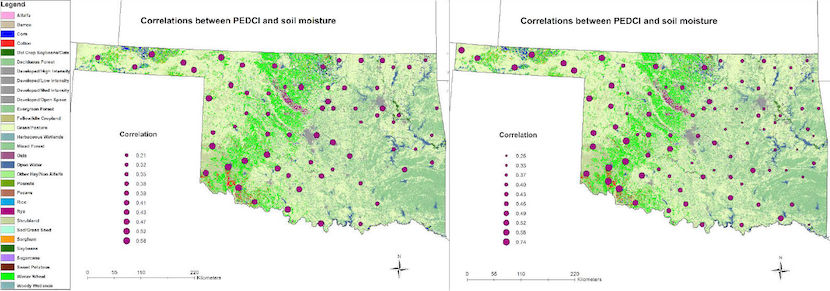Liyan Tian Dissertation Defense
Jun 5, 2017 - CSL

Liyan Tian
Analysis of Spatial-Temporal Variations of Drought in Oklahoma
Ms. Liyan Tian
Time: Tuesday 6 June, 2:00-5:00 p.m.
Location: 712 O&M
Abstract: Drought is a recurrent natural hazard that has impacts on agriculture, hydrology, ecosystem, and social-economy. A comprehensive analysis of drought is valuable for drought assessment and mitigation. Oklahoma is a state that frequently experiences drought. The goal of this dissertation is to analyze the spatial-temporal patterns of drought in Oklahoma. Specifically, it developed a new drought index and evaluated it against a number of widely-used drought indices. Then, the spatial-temporal patterns of drought in Oklahoma were investigated using the most suitable drought index. Finally, the impacts of climate oscillations on the drought were quantified and used to develop drought forecasts.
A new drought index called the Precipitation Evapotranspiration Difference Condition Index (PEDCI) was developed. It overcomes a number of the limitations of other drought indices. The comparison of PEDCI and six widely used drought indices (Palmer’s Drought Severity Index, Z-Index, Standardized Precipitation Evapotranspiration Index (SPEI), Standardized Precipitation Index, percent normal, and percentiles) demonstrated that the performance of drought indices varies temporally and spatially. The SPEI is the drought index that is the most representative of soil moisture conditions. The correlations with winter wheat yield indicated that drought indices such as SPEI, Z-Index and PEDCI, which are based on precipitation and evapotranspiration, are most appropriate for representing the impact of drought conditions on crop yield.
Oklahoma was divided into four regions (southeast, southwest, northeast, and northwest Oklahoma) for the spatial and temporal analysis of drought. Drought frequency in northwest Oklahoma is higher than in other regions, and the frequency in spring is higher than in other seasons. There is a decadal-scale drought cycle in Oklahoma. Droughts are caused by both decreases in precipitation and increases in evapotranspiration, especially in recent years.
Finally, drought is influenced by multiple climate oscillations. Seven regression models were developed for producing drought forecasts. The CCA-based regression model using multiple teleconnections at different lags was more skillful than the other drought forecast models. While skill is limited in some seasons, this method has promise for providing drought early warning in Oklahoma.
 2000-2014 correlations between the 1-month Precipitation Evapotranspiration Difference Condition Index and soil moisture at 5 cm (left) and 60 cm (right).
2000-2014 correlations between the 1-month Precipitation Evapotranspiration Difference Condition Index and soil moisture at 5 cm (left) and 60 cm (right).